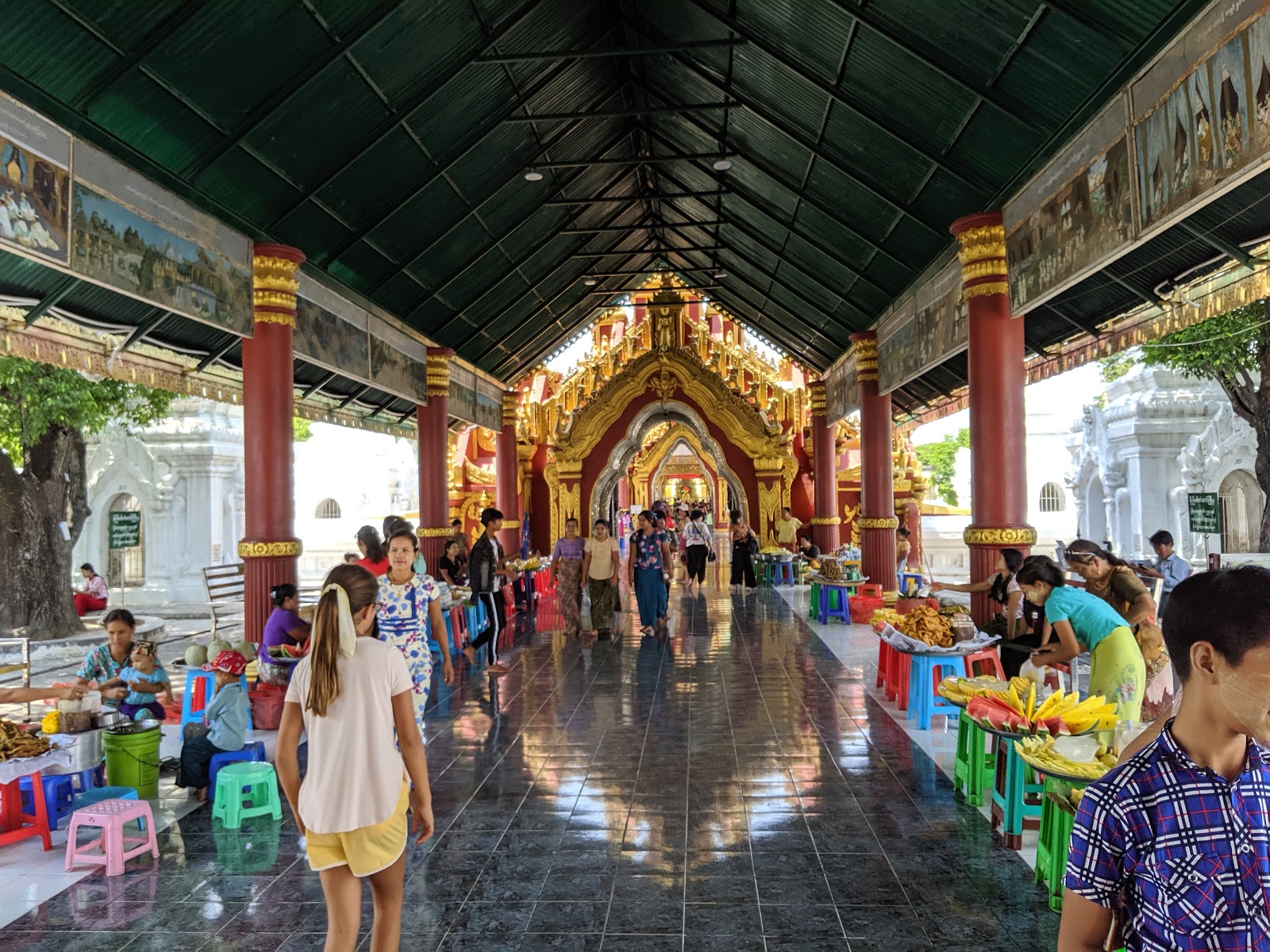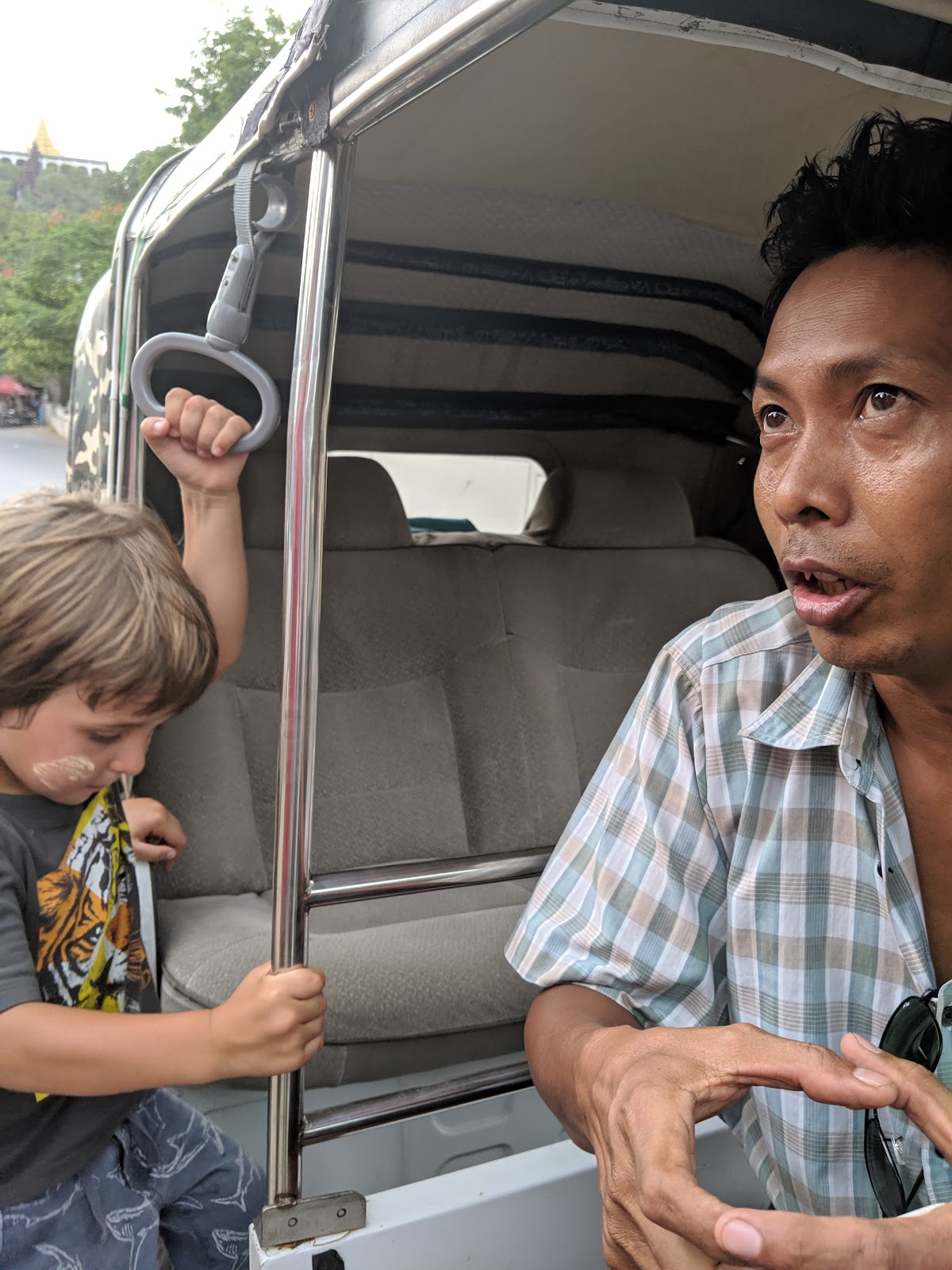Soledad Carves in Mandalay
We first visited Myanmar back in December 2016. We enjoyed it so much that we decided to return. Bagan was the highlight of our prior trip so we wanted to spend more time there than we had before. The rest of our 2 weeks in Myanmar would be in Mandalay, which we had not visited previously and where we would start.
Myanmar is an amazing country. It is currently my favorite country to visit in the world. It is mystical, relatively untraveled, rich in culture, economical, and its people are the most welcoming that I’ve encountered in the world. However, it had one of the world’s more oppressive governments for many years. It’s current government still has problems with equal rights and treatment. Myanmar’s “illegal immigrant” issue with its Rohingya population makes the USA’s problem with Mexico and Central America look like peanuts. There are sections of the country were foreigners are forbidden to travel and areas near the Thailand border that contain refugee camps with 3 generations of Myanmar people. However, in the midst of this, the places where you can travel truly inspire awe.
We arrived in Mandalay in the dead of summer so it was hot. Fortunately, the past 19 years in Texas have fully developed my immune system to heat. Less so for the kids & Soledad. We had highs of 95-97 and lows of 81-82 while there. Not terrible, but the heat was exacerbated by being outside most of the time or in locales without air conditioning. So this was the backdrop for our exploring what would end up becoming one of our favorite cities in the world.
From breakfast at the hotel, we ordered a tuk tuk via the Grab app and headed over to a few temples in the northeast area of Mandalay. For world travelers, rideshare apps are a sea change. In countries that have them (Mongolia did not) the grind of trying to negotiate with local taxis who possess asymmetric information and typically work as block by block oligopolies is gone. Different countries use different apps but finding, downloading and using that app takes away SO many headaches.
While we were there, artisans from the Missing Decorative Elements Woodcarving Program of the World Monuments Fund were carving pieces of teak to add to missing areas of the monastery. Using the Google Translate app, hand signals, and persistence we were able to learn that they would let Soledad take a discarded piece of teak and try to learn their method of ancient carving. They actually seemed happy that someone was taking an interest in their work and were more than willing to make room for her. Soledad worked with a piece of teak, different chisels, and the received pointers from one of the program’s staff. Three hours later, Soledad left with a piece of very partially carved wood, a new respect for the craft, and one tired back from hunching over to chisel. What a great opportunity for her.
While Soledad was carving, Vicente, Milagro, and I ate some ice cream and went across the street to and explored the religious State Pariyatti Sasana University.
After lunch, the last temple of the day was about 6-8 blocks away. However, the family was hot and tired so we found a tuk tuk driver to take us to the Sandamuni Pagoda.. Sandamuni was created in 1874 as a memorial to King Mindon Min’s younger brother who was assassinated along with 3 princes during a rebellion, and contains their graves. It also holds a large number of whitewashed ancillary stupas giving it that ethereal feel like Kuthodaw.
It was a lot of templing in one day, but each place just felt so, so worthy of experiencing. Shoot, there was even a monastery, barely listed on google maps let alone any guide book, Atumashi Monastery, that was next to one of the “prominent” temples. It was huge, empty, and beautiful as well. After the original building burned down in 1890, Atumashi Monastery was rebuilt in 1996 by Burma’s Archeological Department with prison labor. That sentence there tells you a lot about Myanmar.
Our tuk tuk driver, Soe, waited for us outside Sandamuni and took us back to the hotel with a pit stop at the little star I’d made on my Google Maps while at the airport. Earlier that morning China Eastern had called me and let me know they’d found my bag. We stopped by the unlabeled building, waited 10 minute for the crew from the airport to arrive, and got our bags. Whole again!
Soe, our tuk tuk driver, spoke some English and also worked as an all day guide at the rate of $23 per day. He had a laminated flyer with different places around Mandalay that we could choose from for an excursion. They looked very interesting so we picked a few and agreed to meet the next morning to go on an all day tuk tuk excursion around the greater Mandalay area. I was excited, all day tuk tuk!
























































Comments
Post a Comment